Instilling a Sense of Accomplishment in the Player
- Reed Priest
- Dec 10, 2018
- 5 min read
Updated: Dec 11, 2018
Players strive to feel accomplished, to feel a sense of worth behind their actions. Clever game designers can shape their art to synthesize such feelings of satisfaction, subsequently engendering player motivation and fun. Although many designers attempt to reach these results through uninspired trophies, these arbitrarily predetermined goals prioritize a surface-level reward over inherently rewarding gameplay. Through methods that more directly incorporate gameplay, designers can instill a meaningful sense of accomplishment, thereby elevating the player’s satisfaction and enjoyment.
Providing the tools for accomplishment

To allow the player to feel accomplished, designers must first enable to player to accomplish a task. While this logic appears rather straightforward, games do not always follow this progression directly. The Metroid series, for instance, incorporates tantalizingly out-of-reach power-ups for the player to eventually return and earn. This system does provide players with a sense of accomplishment, but only after several hours of gameplay. Hardcore players typically find these challenges motivating and cathartic, yet others find it demoralizing and frustrating. The appropriateness of this delayed accomplishment depends on the game’s target audience.
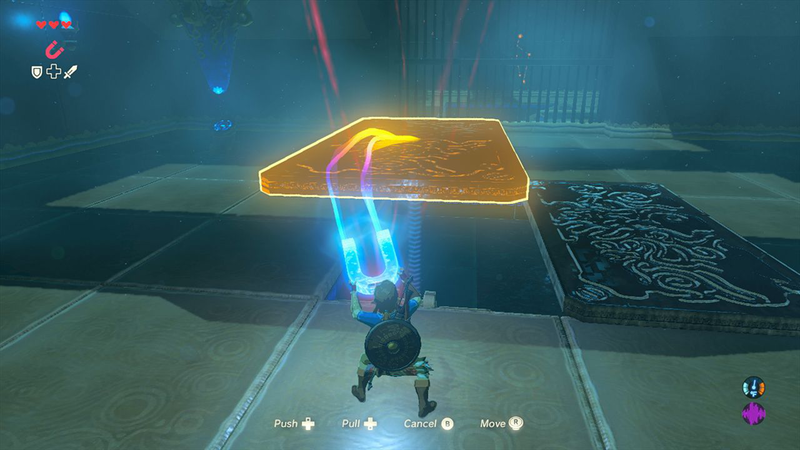
As a more direct approach, most games provide the player with all necessary tools to accomplish a goal. The Legend of Zelda: Breath of the Wild does so particularly well through its first shrines. When the player enters these initial shrines, he/she earns a rune with a specific power. The rest of the shrine can be completed with that rune, thereby putting the necessary puzzle-solving mechanism in the player’s hands. Shrines in Breath of the Wild provide players with bitesized bursts of accomplishment through “Aha!” moments of insight problem-solving. Such exhilarating moments of success reward the player’s clever gameplay, and would not be possible without the game first providing the necessary materials.
Applying the game’s themes
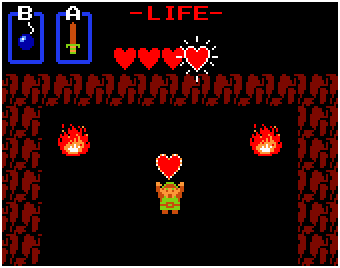
To create an overarching sense of accomplishment within the player, games can match gameplay to their larger themes. The original Legend of Zelda, for instance, intended to empower players through heart-pounding adventures. Along this quest, players occasionally find heart containers which empower the player both internally and mechanically. Thus, the player’s actions of exploring result in the satisfaction of better understanding of the land in addition to the protection that heart containers grant. Exploration is required to find these heart containers, and this explorative gameplay matches the game’s overall theme of adventure, thereby resulting in organic feelings of accomplishment.

Civilization VI similarly aligns its gameplay with its core themes to instill accomplishment within the player. Highly versatile, many paths win games in Civilization VI. The player can militaristically annihilate foes, technologically surpass them, economically dominate them, or culturally outshine them, to name a few. These highly different methods to win not only diversity gameplay, but also convey the game’s theme of the power behind individual choice: the player chooses which path to take and then accepts its effects. The player is punished for choosing a poor strategy, yet rewarded with the fitting strategy. Once again, gameplay behind player choices aligns with the game’s larger theme to naturally synthesize accomplishment within the player.
Incremental progress

Motivational psychology unanimously finds that incremental progress results in intrinsic motivation which satisfies people during their work. In terms of game design, slow steps toward an ultimate end can focus the player and satisfy them with progress. Stardew Valley’s addictive gameplay rests upon the contentment that arises from incremental progress. Although the player starts small in this farming/dating simulator, work’s efficiency grows exponentially. Eventually the player can purchase helpful tools and technologies that aid the farming process, resulting in more resources to purchase more equipment which earn more resources and so on. This positive cycle grips players, even from a slow start, as feelings of accomplishment arise from a job well done. Even better, though, those feelings of gratification are not fleeting; instead, they continually arise from the gameplay’s iterative and escalating nature.
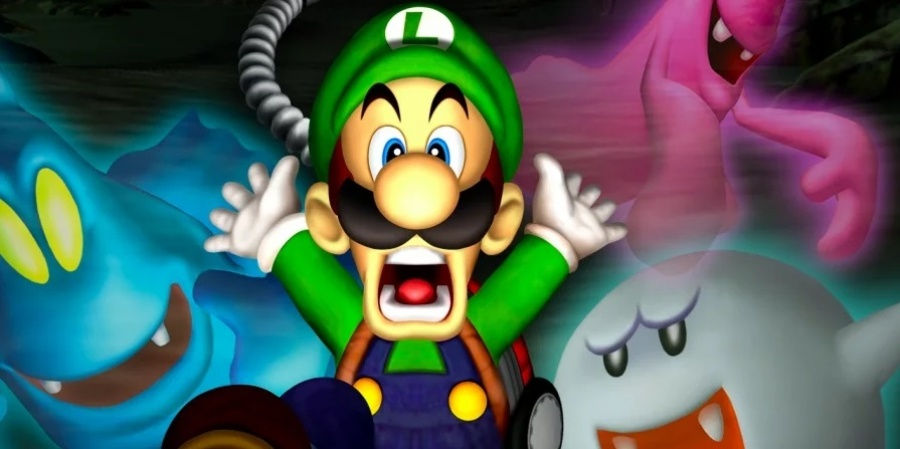
Incremental progress also satisfies the player by turning themselves into a stronger, more competent player. The GameCube’s classic gem, Luigi’s Mansion, admittedly inundates players with a belittling start. Players are dropped in a haunted massive mansion with no complete map, subsequently putting the player in a vulnerable state. Through the game’s progression, however, players familiarize themselves with the mansion’s layout and enemies’ patterns. Rather trophies, gameplay guides the player from a state of helplessness to competence. Constant progression through gameplay can seamlessly fulfill the player more effectively than arbitrary trophies.
Optional Challenges

While incremental progress empowers the player throughout the overall campaign, optional challenges offer momentary, yet deep satisfaction. Many platformers adopt this philosophy: Celeste incorporates strawberries, Super Mario 3D Land integrates star coins, and Hollow Knight includes captive worms. While Super Mario 3D Land encourages the player to acquire star coins to progress, most of these additions solely enrich gameplay with a free, voluntary challenge. The ambitious player enjoys a sense of accomplishment through the skilled gameplay that these collectibles require. Discretion to attempt these challenges also diversifies gameplay by providing different paths for the player based on his/her desired difficulty.
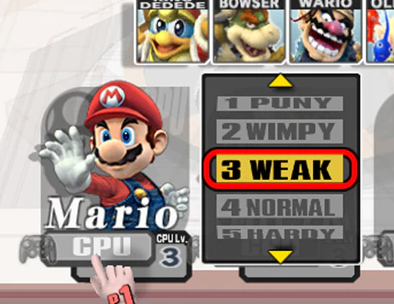
Super Smash Bros. Brawl revels in optional challenges through its opponent skill level choice. The player decides how strong of a CPU to face, and if the player’s sole intention were to win, he/she would choose to fight the weakest enemy; however, defeating a weak enemy is not inherently rewarding. The player wants more than to just win, he/she wants to earn a win. With this intention to reap a worthwhile victory, the player typically combats foes that match or excel their skill level. Victories earned over these purposefully challenging foes result in an natural sense of accomplishment that merely defeating a weak opponent cannot provide.
Boss battles

As one of the most exciting gameplay mechanics, boss battles are a paramount method to generate the player’s sense of accomplishment. Two factors help differentiate the mundane from the empowering boss battle: difficulty and progression. As mentioned in the previous section on optional challenges, difficulty aids gameplay. Harder difficulties challenge players, resulting in enhanced focus and fulfillment. Difficulty differentiates the thrill experienced in tough mid-boss battles from the rush savored in arduous final boss battles. After all, final bosses should be tougher to defeat than mid-bosses, subsequently enthralling the player more. It remains important to note, however, that bosses should not be too difficult. As the unforgivingly punishing Battle Kid demonstrates, players cannot feel accomplished if bosses are too arduous to conquer. A graceful balance must be met between difficulty and ease that depends upon both the player’s experience and the game’s genre. Players should overcome boss battles that incorporate a desirable difficulty, resulting in paramount feelings of fulfillment.
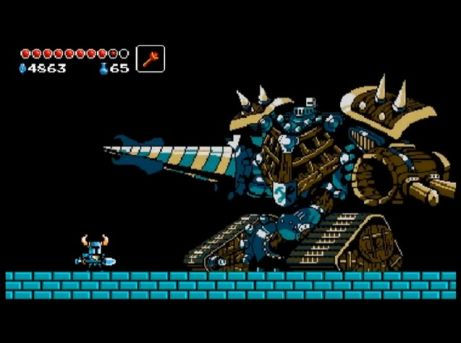
Furthermore, progression also contributes to the player’s satisfaction after a boss battle’s completion. Many boss battles incorporate multiple phases that increase in difficulty. Shovel Knight’s mechanic boss, Tinker Knight, playfully tricks the player into a surprisingly easy victory, resulting in no initial sense of accomplishment. This lack of satisfaction quickly disappears, however, when the battle’s second phase intitates with the introduction of a giant robot. Alternatively, other bosses can be fought at separate times in the story’s progression to eventually generate player accomplishment. Fire Emblem: Path of Radiance masters this approach through the enigmatic Black Knight. This terrifying foe cannot easily be beaten, even at the game’s dramatic ending. Despite the player’s strength, he/she is encouraged to flee from the battle because the Black Knight is too mighty to overcome. It takes Path of Radiance’s sequel for the player to defeat the Black Knight, thereby finally earning satisfaction. Many games incorporate boss battles against the same enemy that the player continually defeats, yet few pit the player against an unstoppable foe, only for the player to train and eventually return to seek accomplishment. Whether progression in boss battles take place throughout multiple phases or multiple encounters, these epic battles refine the player’s experience by rewarding adept gameplay.
Conclusion
Designing games to nurture feelings of accomplishment results in more engaging and satisfying player experiences. While hollow rewards of sadly non-contributive trophies or laughably easy difficulties reap no inner sense of achievement, tactful use of entertaining gameplay honors players with a deep sense of competence and significance. Designers can improve their games’ memorability and connection with the player through these richer feelings of accomplishment, and if done well, is a meaningful accomplishment in its own right.



Comments